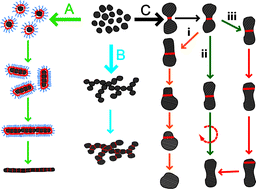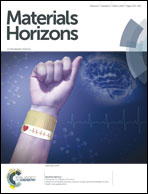Cold welding: a phenomenon for spontaneous self-healing and shape genesis at the nanoscale
Abstract
Making direct, intimate connections between individual nano-objects is crucial for the fabrication of hierarchical and multifunctional nanostructures with inherited properties superior to those arising from an individual entity. In this review, we introduce and discuss the significance of cold welding, an intriguing ambient condition route for making connections between nanoparticles, thin metal films, or nanowires. Factors such as the surface chemistry (activation, passivation) and the chemical nature of the material strongly influence the process of cold welding. Irrespective of the parent particle sizes and morphologies, the process is driven by a need to minimize the surface chemical potential. It is evident from recent studies that rapid atomic rearrangements, surface diffusion, and atomic hopping are the fundamental modes for atomic transport on nanoscale metal surfaces. In this fashion, highly curved surfaces generally become filled in order to minimize the surface curvature, satisfying the criterion for reduced free energy. It is possible to generate defect-free single-crystalline nanomaterials via three-dimensional (3-D) rotation or atom-by-atom orientation of the crystallographic planes at the inter-particle boundary, a novel remodelling process characteristic to cold welding. Cold welding has been successfully applied in the template-assisted synthesis of diverse and interesting morphologies, including nanogratings, nanotubules, and multipods, as well as the transfer of metal nano-objects onto metallic surfaces. Even though there has been significant progress in making nano-junctions, it remains largely limited to template-assisted synthesis. There is immense scope, however, for the improvement and expansion of the cold welding phenomenon toward site-specific coalescence, precise morphological and dimensional control of nano-junctions, and the construction of defect-free heterometallic junctions, among other areas. Although we acquaint the reader with the ground-breaking examples of cold welding reported by the few pioneers in the area, numerous examples discussed in this review are “found” examples which, in the original publication are not actually referred to as cold welding, although in hindsight they plainly should be categorized as such and they make important contributions to our understanding of the phenomenon. Given the infancy of the concept of cold welding, we anticipate that this review will serve as a call to arms, bringing broader awareness to this exciting and virtually-unexploited area of controlled nanoscale synthesis. With proven utility in the construction of diverse nanoassemblies and morphologically-distinct nanomaterials required for next-generation plasmonic, sensing, and catalytic efforts, cold welding surely has a role to play in the genesis of shape-controlled nanostructure and deserves wider attention.


 Please wait while we load your content...
Please wait while we load your content...